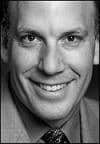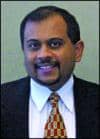by Alan Ruskin
Three different systems take the manual labor out of orthodontics

The business of straightening teeth, like any other industry, is subject to the dual certainties of obsolescence and modernization. Today, orthodontics has advanced to the point where excellent choices exist that were unheard of just a few years ago. Virtual 3D imaging and robotics now promise an excellent result without the orthodontist having to bend a single wire.
Systems such as SureSmile, Insignia, and iBraces have succeeded by requiring less of everything: less time, less radiation exposure, less discomfort, and most of all, less chance of error. And yet, as industry experts will acknowledge, the orthodontist still counts, as his treatment plan, skills, and willingness to learn are needed to optimize the benefits of the new technology. It’s just become a heck of a lot easier, for both the doctor and the patient.
SureSmile
At Orametrix, Richardson, Tex, it’s all about SureSmileTM, an advanced orthodontic system that utilizes 3D computer imaging and robotics. In fact, according to Dan DeSilva, vice president of marketing, Orametrix was formed in 1998 for the specific purpose of designing a digital technology that would vault over the traditional “hands-on,” labor-intensive orthodontic approach. The SureSmile system, which began early commercial testing in 2002 and entered the market in 2004, allows doctors, DeSilva explains, to move to a “knowledge-based” approach that involves simulating patient treatment on a computer to effectively shorten treatment time while also increasing precision.
 |
In the traditional method of treatment, the orthodontist, DeSilva says, “had to visually assess the teeth over a series of appointments to get them to the right position. This would often result in a Rubik’s Cube-type of effect where one area might be improved, necessitating further adjustments in another area. These frequent adjustments would tend to lengthen the treatment time to an average of about 2 years.”
With SureSmile, treatment begins with a 3D model produced from images taken inside the patient’s mouth by the system’s scanner. The doctor works with the software and constructs a treatment plan, “virtually” moving the teeth to where he wants them to be. The treatment plan is then output to a high-precision industrial robot that bends an archwire that is customized to the patient’s needs.
The wire-bending robot can simulate the movement of the human hand, and works with wire that is made from a shape-memory alloy composed of copper, nickel, and titanium.
The shape-memory alloy, DeSilva notes, “has been around for over a decade, but only in generic form because there previously wasn’t the ability to bend the wire away from the patient.” The shape-memory alloy retains the bends programmed into it at a temperature of 400ºC, and then, after cooling and being restored to its original, pliable form, it reproduces those bends in the patient’s mouth after being activated by the patient’s normal body temperature (about 35ºC).
DeSilva admits that there was resistance to the system at the beginning, as some doctors objected to the notion of having their hands-on skills taken over by digital technology. But once education and training was well under way, acceptance became consistent and growth became notable. At the annual SureSmile Users Conference in Orlando, Fla, this past February, there were 800 doctors and staff, up from 11 attendees at the first conference 5 years ago. “To date,” DeSilva reports, “we’ve started or completed over 30,000 patients with the SureSmile system.” All of this has occurred in the United States alone, although there is research and development being done in Germany, and DeSilva anticipates entering the international market before long. DeSilva says more than 200 practices are currently using SureSmile, “and we are now doubling our growth yearly.”
Since most patients would like to have their braces off as soon as possible, timesaving is a key factor in orthodontic treatment, and Orametrix has established a database of 6,000 patients using SureSmile, compared to 2,300 in conventional treatment. “Conventional treatment, on average, takes just under 2 years, while SureSmile takes 15 months, with a good number completed within 1 year. Doctors generally report a reduction of up to 35% in length of treatment,” DeSilva says.
Another key factor in the success of the system is training. “Doctors would all say,” DeSilva says, “that it does take a reasonable amount of time to learn to use the system.” Instruction begins immediately upon installation, with orthodontists and their staffs going to Dallas for a 3-day training program. The doctors, naturally, must learn all aspects of the system, with their staffs trained especially in the use of the scanner and digitizer. SureSmile’s Practice Development Consultants then make regular follow-up visits to the doctor’s office and/or offer phone consultations for the next 6 to 9 months.
“Our goal,” DeSilva concludes, “is to help doctors tap into their knowledge of how to treat patients in different types of clinical situations, and be creative with it. We designed SureSmile to be a tool for an expert user, and the expert user it’s designed for is the orthodontic specialist.”
iBraces
Lea Nesbit, president of Lingualcare, Dallas, has a quite literally different point of view. Nesbit’s company, now known since its takeover by 3M as “Lingualcare, a 3M Unitek company,” makes the iBraces system, a lingual appliance system. The reasoning, of course, is to spare those patients who prefer not to show their braces, but the “i” in i-Braces stands not only for “invisible,” Nesbit says, but also for “individualized” and “intelligent.”
 |
Nesbit was formerly at Orametrix, along with her current partner, Ruedger Rubbert, the founder of Orametrix and designer of the original wire-bending robot in 1990s Germany. Nesbit and Rubbert decided they wanted to apply their technology to lingual braces, so they departed from Orametrix and formed their new company. In the beginning, they had fewer than a dozen employees, and, while confident in their product, they came to realize that they would need a larger entity to handle all aspects of production and sales. Their search for a partner ended with inclusion in 3M Unitek’s orthodontics division. “We needed a partner that could help us get out in the world,” Nesbit succinctly states.
A key difference between iBraces and Orametrix’ SureSmile, Nesbit says, is that “we don’t give the doctor any software or equipment to be trained on. The doctor takes an impression just as in the traditional method, fills out a laboratory form which we provide, and sends it all back to us. Six weeks later, we send the customized brackets and wires ready to be bonded. We design the brackets as well as bend the wires. All the technology is on our side.”
Robotic wire-bending is particularly suited to lingual braces, Nesbit says, because on the lingual side, the arch is smaller and the distance between the brackets is shorter. “So the bends have to be very tight, which is easier to do robotically. Also, since the archwire is on the inside of the teeth, the mechanics are reversed.”
An important point, Nesbit says, is that lingual braces were not formerly popular because the archwires were hard to bend. “But now that we have the software to make customized brackets, tooth by tooth for each patient, that is not a problem. Our software calculates the wire geometry and sends the CNC [computer numeric controlled] data to the robot for bending.”
Despite all of this labor-saving technology, Nesbit believes that ultimately it’s up to the orthodontist to do a good job on diagnosis. “The truth is your orthodontic treatment is pretty much in the hands of your orthodontist. The doctor has to achieve facial harmony and balance, as well as straightening the teeth. We feel that you can get as good or better outcome with lingual braces as any other system, but you can’t claim the appliance gives you a great result if the doctor doesn’t use it right. The computer just models the doctor’s diagnosis and treatment plan.”
Insignia
A company that features the more traditional labial braces, but does so by specializing in the brackets rather than the wires, is Ormco, Orange, Calif. A division of Danaher Co, Ormco pioneered Insignia technology under the leadership of Frank Miller and the technical expertise of Craig Andreiko, DDS, MS. After 16 years in development, Insignia debuted in 2005. Andreiko, who built the appliances and wrote the software for Insignia, says that he and Miller started digital orthodontics from scratch in 1980, culminating in the Insignia system. “Insignia is completely unique to each patient. First, we scan the doctor’s impression and make a plaster model. We use destructive scanning, where we pour black epoxy over the impression and scan it slice by slice, ending up with a contour map of the patient’s teeth.”
 |
After that, three different types of software come into play. “First is the anatomy software, where each tooth is individually delineated and landmarks are applied. Then comes the design software, where we build the software model, arranging the teeth within the skull structure to achieve a result that aligns all the teeth in a way that best suits the patient’s facial characteristics. Finally, there’s the approval software, which the doctor has in his office and he uses after receiving the model from us.” The orthodontist goes over everything, making adjustments to the model as he sees fit. He can move the teeth any way he wants to until he is completely satisfied, then return it to Insignia. “When we get it back we do a couple of ‘housecleaning’ operations on his work because he might have made a small mistake somewhere, then send it back to him. All manufacturing of the brackets and wires occurs after the orthodontist has approved the final results.”
In the Insignia system, the emphasis is on the brackets rather than the archwires. Andreiko explains, “We cut each slot in each bracket individually, so instead of bending the archwire, we bend the brackets.”
The archwire is laced into a computer-cut groove on a block, and is baked at several hundred degrees Fahrenheit. It is then cooled and cleaned, and a mark is placed at its midline so the orthodontist knows where the wire is supposed to go. “We send everything back to the doctor in one box,” Andreiko says.
Ormco also makes lingual appliances, but they are manufactured by lab technicians, rather than the customized computer-controlled process used to make Insignia. The Insignia labial braces are definitely Ormco’s main product as, Andreiko says, “there’s not enough business for the back-of-teeth braces, because everything is harder to do when you’re working with the inside of the teeth.” Andreiko should know, since, in addition to having developed Insignia, he also is the original inventor of lingual braces. He does believe, however, that lingual braces can produce results just as good as their labial counterparts, but require a “top-notch practitioner” to achieve consistency. In this regard, he echoes Lingualcare president Nesbit in her belief that, “Your orthodontic treatment is pretty much in the hands of your orthodontist.”
Using All Three
Stephen Tracey, DDS, MS, Upland, Calif, is qualified to comment on all three systems, since he uses all of them.
In comparing the Insignia and SureSmile systems, for instance, he sums up the differences by saying, “Insignia takes impressions, turns them into 3D models, and creates an ideal occlusion in a virtual world ahead of time, taking the face and jaw into consideration. SureSmile, on the other hand, tells the orthodontist, ‘We’ll fix anything that’s not right.’ It’s reverse engineering, working with the wire. SureSmile takes any brackets and incorporates the archwires with multiple bends, whereas Insignia says, ‘Let’s make a perfect model in the first place.’ I think both systems have merit.”
Tracey believes that lingual appliances, simply because of the aesthetic convenience of not showing any braces, are probably the wave of the future. “But most orthodontists who got into it, got out of it [because of the difficulties and added expenses involved]. I’m trying to get Craig [Andreiko] to do lingual Insignia.”
The main point, Tracey asserts, is that, “we’re now able to use 3D scans, technology, and computing power to customize braces like never before.”
Alan Ruskin is a staff writer for Orthodontic Products. For more information, contact





